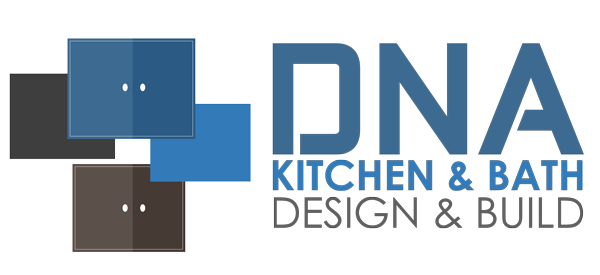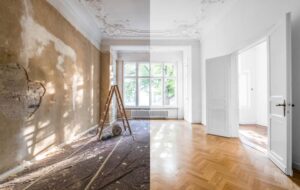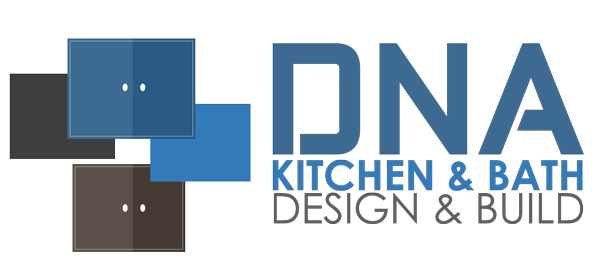Are you on the fence about whether to replace or reface your kitchen cabinets? It’s a tough call. We’ve got you covered, breaking down everything you need to know. From understanding the difference between replacing and refacing to considering costs and benefits, we’ll walk you through it all.
So, take a breath, dive in, and let’s figure out what’s best for your kitchen—and your wallet.
Understanding the Difference Between Replacing and Refacing Kitchen Cabinets
You’ve got to understand the key differences between replacing and refacing your kitchen cabinets before you make a decision. Replacing involves removing your old cabinets completely, while refacing means updating the exterior look without changing the cabinet’s structure. Cabinet materials play a significant role in this choice; some materials are easier to reface than others.
Let’s talk about lifestyle impact too. You’re busy, right? Refacing is quicker, less disruptive, and can be done while you continue with your daily routine. On the other hand, if you’re after a complete kitchen transformation or your current cabinets are falling apart, replacement might be necessary despite being more time-consuming and potentially inconvenient.
Factors to Consider Before Replacing Kitchen Cabinets
It’s important to weigh several factors before making a significant change to your home’s interior. When it comes to kitchen cabinets, don’t rush into replacing them without considering the following:
- Cabinet Durability: Don’t just focus on aesthetics; consider how long you want your cabinets to last. Higher-quality materials may cost more upfront but can provide longer-lasting durability.
- Material Choices: There are many options, from solid wood to laminate or thermofoil. Each has its pros and cons concerning durability, maintenance, and price.
- Budget: Replacing cabinets can be expensive; ensure it fits within your budget constraints.
The Process and Benefits of Refacing Kitchen Cabinets
We’ll now delve into the process and benefits of refacing your kitchen cabinets, a potential alternative to full replacement. Refacing techniques involve removing the old cabinet doors and drawer fronts, and then applying a new veneer over the existing surface of the body. New hinges, knobs, pulls and molding complete the transformation.
Apart from being cost-effective, refacing is eco-friendly. It significantly reduces waste since it reuses your existing cabinetry’s woodwork. This cuts down on deforestation and decreases landfill waste – lessening its environmental impact.
So why not consider refacing? You’ll save money without sacrificing style or quality; plus you’re doing Mother Earth a favor too. Remember, a refreshed look doesn’t always mean starting from scratch!
Read Out: Kitchen Design Layouts to Increase Working Efficiency
Cost Comparison: Replacing Vs. Refacing Kitchen Cabinets
Let’s dive into the cost comparison between replacing and refacing your cabinet units, a topic that could greatly influence your renovation decision. Consider these budgeting tips:
- Replacement usually costs more, but if you’re aiming for a completely new look or layout, it might be worth it.
- Refacing is typically less expensive and better for those on tighter budgets.
Material selection also impacts the cost. High-end materials increase both replacement and refacing costs. However, opting for affordable yet durable materials can keep expenses down without sacrificing quality.
Making the Decision: Key Takeaways on Replacing or Refacing Kitchen Cabinets
You’ve got to weigh the pros and cons carefully when deciding between these two options for your cabinet units. In terms of Cabinet Material Choices, both refacing and replacing offer a variety of options.
- Refacing: This option lets you keep your existing structure, allowing you to choose materials that match or complement what’s already there.
- Replacing: This gives you the freedom to select from a wider range of material choices, including Eco-Friendly Options like bamboo or reclaimed wood.
- Cost & Environment Impact: Remember that refacing generally costs less and reduces waste, making it an eco-friendly choice.
Ultimately, you’ll need to balance aesthetics with functionality and sustainability in order to make the best decision for your kitchen remodel.
Frequently Asked Questions
Q: What Are Some Popular Designs and Trends for Kitchen Cabinets?
A: You’re seeing trends like deep blues, greens, and even black for cabinet color trends. Innovative storage solutions are also popular with pull-out racks and hidden compartments being incorporated into kitchen designs.
Q: How Long Will It Take to Replace or Reface My Kitchen Cabinets?
A: Venturing into the world of kitchen upgrades, you’re looking at a week or two to reface cabinets. A full replacement could take up to four weeks. Material selection and cost comparison greatly impact this timeline.
Q: How Can I Maintain My Kitchen Cabinets After Refacing or Replacing Them?
A: To maintain your kitchen cabinets after refacing or replacing them, you’ve got to apply proper cleaning techniques. It’s crucial to consider the material durability and use products that won’t damage your cabinets’ finish.
Q: What Are the Environmental Impacts of Replacing Versus Refacing Kitchen Cabinets?
A: When considering the environmental impacts, refacing utilizes less resources. It’s like choosing to recycle—you’re reducing waste and using sustainable materials, contributing positively to waste management. Replacement creates more waste, which isn’t as green.
Q: Can I Reface or Replace My Kitchen Cabinets Myself or Do I Need to Hire a Professional?
A: You can tackle refacing or replacing cabinets yourself, but be aware of DIY challenges. Comparing costs, hiring a professional might actually save you money if things go wrong due to inexperience.
Conclusion
Choosing between replacing or refacing your kitchen cabinets can be as tough as choosing your favorite dessert. Consider the cost, time, and final look before making a decision.
Remember, if your cabinets are in good condition, you may save bucks by refacing them. However, if they’re badly worn out, replacement might be best.
Ultimately, it’s about giving your kitchen a fresh new look that suits your style and budget perfectly. Learn more about DNA Kitchen & Bath here.
Looking for high-quality renovation services? Contact us now








